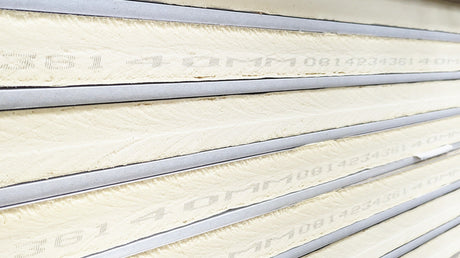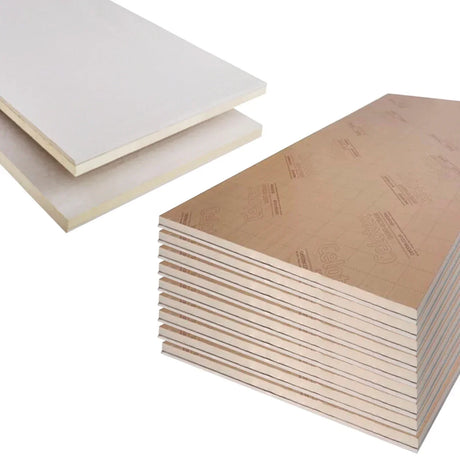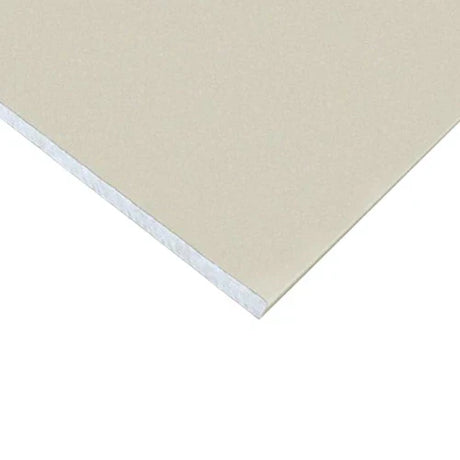When I first started learning about building materials, I'll admit that sustainability wasn't at the top of my priorities list. Like many newcomers to the construction world, I was focused on costs, availability, and whether the materials would do the job. But as I've delved deeper into the industry, I've discovered something rather remarkable: some of the most practical building materials are also amongst the most environmentally responsible choices we can make. Planed Square Edge timber is a perfect example of this happy coincidence.
Understanding the Material: More Than Just a Smooth Finish
Before we explore the sustainability credentials, it's worth understanding exactly what we're talking about. PSE timber—Planed Square Edge timber—is essentially timber that's been carefully machined on all four sides to create smooth, precise edges. At first glance, this might seem like a purely aesthetic consideration, something that matters only if you're concerned about appearances. However, this processing actually plays a surprisingly important role in the material's environmental profile.
The planing process ensures consistent dimensions and removes surface imperfections, which means less waste during installation and fewer offcuts ending up in skips. When you're working with planed timber from established UK manufacturers like James Latham or Arnold Laver, you're getting material that's been processed to exacting standards, maximising the usable timber from each piece whilst minimising unnecessary waste.
The Carbon Story: Nature's Built-In Climate Solution
Here's something that fascinated me when I first learned about it: trees are remarkably effective carbon capture machines. Through photosynthesis, they pull carbon dioxide from the atmosphere and store it within their structure. A typical cubic metre of timber stores approximately one tonne of carbon—and that carbon remains locked away for as long as the timber remains in use.
What makes this particularly compelling from a sustainability perspective is what happens when we harvest timber responsibly and use it in construction. The carbon stays captured in the building materials, potentially for decades or even centuries depending on the application. Meanwhile, new trees are planted and begin their own carbon capture journey. It's a genuinely renewable cycle when managed properly.
The contrast with alternative building materials becomes stark when you consider this. Manufacturing steel and concrete requires significant energy inputs and releases substantial amounts of carbon dioxide. Planed timber, by comparison, arrives at your project having already made a positive contribution to atmospheric carbon levels simply by virtue of what it is.
Responsible Sourcing: The Foundation of Sustainable Timber
Of course, all of these environmental benefits hinge entirely on one crucial factor: the timber must come from responsibly managed forests. This is where certification schemes become absolutely vital, and it's something I've learned to pay close attention to when selecting materials.
The two major certification schemes in the UK—FSC (Forest Stewardship Council) and PEFC (Programme for the Endorsement of Forest Certification)—both ensure that timber comes from forests managed according to strict environmental and social standards. These aren't merely token gestures; they represent comprehensive frameworks that govern everything from biodiversity protection to the rights of forest workers and local communities.
When you source quality planed timber from reputable UK suppliers like those stocked by DIY Building Supplies, you're typically getting material that carries one of these certifications. The UK Government's Timber Procurement Policy recognises both FSC and PEFC certification as Category A evidence of legal and sustainable sourcing, giving you confidence that you're making a responsible choice.
The Manufacturing Advantage: Efficiency in Processing
One aspect of planed timber's sustainability that often goes unappreciated is the efficiency of its manufacturing process. Modern timber processing facilities, such as those operated by leading UK manufacturers, have become remarkably sophisticated in maximising yield and minimising waste.
The planing process that creates this refined material is carried out using advanced machinery that optimises material usage. The precision of this equipment means that less timber is lost to imperfect cuts or inconsistent dimensions. Furthermore, the sawdust and wood shavings generated during processing don't simply end up as waste—they're increasingly being utilised as biomass fuel, creating a circular approach to material use.
Compare this to the production of many alternative building materials, which often involve multiple energy-intensive manufacturing stages, and the environmental credentials of planed timber become increasingly compelling.
Longevity and Durability: The Hidden Environmental Benefit
There's a sustainability consideration that's easy to overlook when you're simply comparing materials on a specification sheet: how long will they last? PSE timber, particularly when properly treated and maintained, can deliver service lives measured in decades.
This longevity matters enormously from an environmental perspective. Every time we need to replace a building element, we're consuming resources, generating waste, and requiring energy for manufacturing and transport. Materials that last longer reduce this cycle of replacement, multiplying their environmental benefits over time.
The smooth, precise finish of planed timber also contributes to its durability in subtle ways. The planed surfaces accept protective treatments more evenly and thoroughly than rougher alternatives, enhancing the timber's resistance to moisture and decay. For applications ranging from internal joinery to external cladding, this translates to longer service lives and reduced environmental impact over the building's lifetime.
The Embodied Energy Equation
When assessing building materials' environmental credentials, embodied energy—the total energy required to produce, transport, and install a material—provides crucial insight. Planed timber performs remarkably well in this regard.
The production of timber products requires significantly less energy than manufacturing steel, aluminium, or concrete. The trees do the heavy lifting of growing, powered entirely by sunlight. The processing—kiln drying, planing, and finishing—does require energy input, but this remains modest compared to the energy demands of producing most alternative materials.
Manufacturers like James Latham and Arnold Laver have invested in increasingly energy-efficient processing equipment, further reducing the embodied energy of their products. Many facilities now utilise waste wood products as biomass fuel, creating a partly self-sustaining energy cycle within their operations.
End-of-Life Considerations: Closing the Circle
What happens when planed timber reaches the end of its service life? This question reveals another dimension of the material's environmental advantages. Unlike many building materials that end their lives in landfill, timber offers multiple responsible disposal options.
Quality planed timber can often be reclaimed and reused in new applications—repurposed into furniture, used in renovation projects, or employed in less demanding structural roles. When reuse isn't feasible, timber can be recycled into engineered wood products or particleboard, extending its useful life in a different form.
Even when timber finally reaches the point where reuse or recycling isn't practical, it can serve as a renewable energy source through controlled combustion, returning the stored carbon to the atmosphere whilst displacing fossil fuel use. This contrasts sharply with materials like plastic composites or certain treated products that can release harmful substances during disposal.
The Regulatory Landscape: Favouring Sustainable Choices
The construction industry is witnessing an accelerating shift towards sustainability requirements in building codes and planning policies. Understanding this trajectory helps explain why choosing sustainable materials like certified planed timber isn't merely an ethical consideration—it's increasingly becoming a practical necessity.
Green building certification schemes including BREEAM, LEED, and SKA rating all recognise sustainably sourced timber as contributing positively to a building's environmental performance. For projects requiring these certifications, using properly certified planed timber can help achieve the necessary credits and ratings.
Public sector projects, in particular, face strict requirements around sustainable sourcing under the UK Government's Timber Procurement Policy. By choosing FSC or PEFC certified materials, builders position themselves advantageously for both current requirements and likely future regulations.
Making the Practical Choice
What strikes me most about planed timber's sustainability credentials is how they align with practical considerations rather than requiring compromises. You're not choosing between environmental responsibility and project performance—you're getting both.
The material offers excellent workability, consistent dimensions, and a superior finish whilst simultaneously delivering genuine environmental benefits. For applications ranging from internal framing to visible joinery work, planed square edge timber provides a solution that meets both technical requirements and sustainability objectives.
At DIY Building Supplies, we've built relationships with manufacturers like James Latham, Arnold Laver, and BSW Timber specifically because they share our commitment to both quality and environmental responsibility. These established UK manufacturers employ state-of-the-art processing facilities and maintain rigorous certification standards, ensuring that the timber we supply delivers on both performance and sustainability.
The Path Forward
As someone relatively new to the building industry, I've been genuinely encouraged by how sustainability and practicality can work hand in hand. PSE timber exemplifies this alignment, offering a material that builders can feel good about using whilst knowing it will deliver the performance their projects demand.
The environmental benefits—carbon storage, lower embodied energy, responsible forest management, and end-of-life flexibility—aren't abstract theoretical advantages. They represent genuine, measurable contributions to reducing the construction industry's environmental impact.
Whether you're a trade professional working on commercial projects or a DIY enthusiast tackling a weekend renovation, choosing certified planed timber from reputable suppliers represents a straightforward way to make your building projects more sustainable. The material's environmental credentials don't require you to sacrifice quality, performance, or cost-effectiveness—they simply add another dimension of value to an already excellent building material.
As building regulations continue evolving towards greater sustainability requirements and clients increasingly prioritise environmental credentials, familiarising yourself with materials like planed square edge products isn't just environmentally responsible—it's smart business practice for the future of construction.









